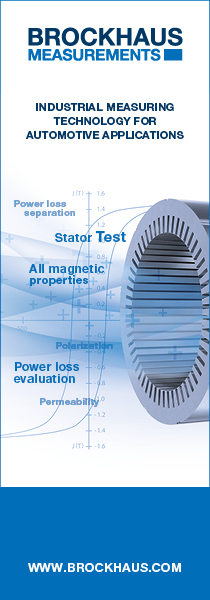Updated 1 October 2021
Event postponed
A one-day event on the extreme edges of magnetics – the biggest, fastest, smallest, strongest. If you’re interested in magnets and magnetics, there’ll be a technical talk for you.
The virtual event will include presentations and networking opportunities amongst a global audience. Talks will range from magnetospheres for planetary habitats, to micro-scale Nd magnets, including extremely challenging measurements, designing high speed motors, and more.
Join us to find out what’s happening at the cutting edge, and maybe find the germ of an idea for the problem you’re struggling with.
CHAIRS
- Matthew Swallow, Bunting Magnetics Ltd
DRAFT PROGRAMME
The programme will consist of talks with Q&A, exhibitors, and networking sessions.
Approximate Start Time: 13:00
Approximate End Time: 18:00
All times GMT
EVENT PLATFORM
The seminar will be hosted on hopin because it offers an intuitive online conference experience. As well as the talks on the Stage, at any time you can
- visit and talk with exhibitors in the Expo,
- set up small Sessions to talk together,
- search for and Invite delegates you want to speak to through the People list,
- Chat to the whole event, a session or an exhibitor’s booth,
- Ask questions of speakers and the whole event via Chat,
- examine the event Schedule in Reception for any changes,
- try the random delegate connection of Networking (an online version of standing in the queue for coffee and talking to the person behind you).
CONTINUING CONTACT / GDPR
Please note, by providing contact details during registration, you authorise us to
- use these contact details to let you know details of this event, and
- add your contact details to our contact database to let you know about future events that may be of interest.
Please let us know at enquiries@ukmagsoc.org at any time if you do not wish to be contacted in this way. Also, we can remove you from our contact schedule at any point in the future.
SPONSORS

How to build a magnetic field around Mars for terraforming
by Dr Ruth Bamford of Science and Technology Facilities Council (STFC), Rutherford Appleton Laboratory
If humanity is ever to consider substantial, long-term colonization of Mars, the resources needed are going to be extensive. For a long-term human presence on Mars to be established, serious thought would need to be given to terraforming the planet. One major requirement for such terraforming is having the protection of a planetary magnetic field - which Mars currently does not have. The Earth’s magnetosphere helps protect the planet from the potential sterilizing effects of cosmic rays and also helps retain the atmosphere, which would otherwise by stripped by large solar storms as they pass over the planet.
Here we explore the practical and engineering challenges that affect the feasibility of creating an artificial magnetic field capable of encompassing a planet. This includes the concerns that define the design, where to locate the magnetic field generator and possible construction strategies.
The optimum solution proposed is novel, although inspired by natural situations at Io-Jupier and fusion plasma techniques.
From µs high intensity magnetic field pulses to µm high performance magnets
by Nora Dempsey of Institut NEEL, CNRS
Hard magnetic thin and thick films can serve as model systems to study high performance hard magnetic materials, and have potential applications in magnetic nano/micro devices. In this talk I will firstly speak about µs pulsed magnetic field systems producing field pulses of intensity up to 10 T, which have been developed for the high throughput characterization of compositionally graded hard magnetic films. I will then speak about the micro-patterning of hard magnetic films to produce micro-magnets characterized by field gradients of the order of 106 T/m. I will finish up by presenting examples of applications of these high performance micro-magnets in bio-medical studies and electro-mechanical actuators.
The ZEPTO project: Energy saving magnets for the next generation of particle accelerators
by Alex Bainbridge of STFC Daresbury Laboratory
The increasing power demands of new particle accelerator technology is problematic from both an environmental and financial perspective. The ZEPTO (zero power tuneable optics) project aims to solve some of these issues by replacing conventional electromagnets in accelerators with energy saving permanent magnets. ZEPTO technology retains field tuneability without affecting field quality by moving the permanent magnet relative to fixed steel structures. We present an overview of ZEPTO technology and discuss the challenges involved, including detailed finite element modelling and complex management of large and variable magnetic forces.
Enabling mK Cryogenic Operation and >30 T Field Measurement with a Graphene Hall Sensor
by Hugh Glass of Paragraf Ltd
Accurate measurements in high magnetic fields and at cryogenic temperatures are possible with Paragraf’s Hall sensor due to its high linearity, absence of planar hall effect and a temperature coefficient that is fractions of one percent, allowing simple, accurate calibration over a wide temperature range.
After 4 rounds of thermal cycling with a temperature range of 5 – 300 K, Paragraf’s sensor showed a 0.1% change in device behaviour. This is minimal compared to the deviation expected from conventional sensors. The ultra-high magnetic field response at cryogenic temperatures was tested, with Paragraf’s sensor giving a highly linear response in fields of up to 30 T at 1.5 K.





